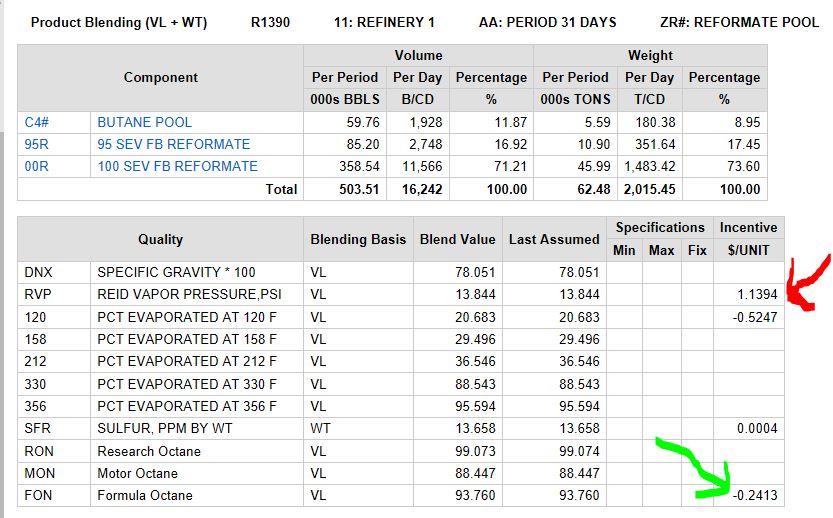Have you ever wondered why pool(1) qualities sometimes have marginal values, even when there is no specification?
The key to understanding a marginal value is structure of the equation. All pool properties have a quality balance row: Input - Assumed - error = 0. It is fixed to zero, so it is always constraining so there is always a marginal value on relaxing the constraint, although it is often zero. That is because the inputs can be varied and so the pools will be made to make the cost of the row as little as possible. However, when there could be more money if the quality changed, but there is no room to vary the inputs, there will be a non-zero marginal value.
The basic equation is:
SUM (Component Quantity * Quality) - Total Blend * Assumed) - error =0
So Error = 0 in a converged solution*.
Marginal values correspond to setting the RHS to 1.
SUM (Component Quantity * Quality) - Total Blend * Assumed) - error =1
that is error =-1
Error distributes into destinations with a positive co-efficient, so relaxing the constraint and having negative error decreases the quality in the destination row. So you would expect to see negative incentives on desirable qualities - such as FON - and positive incentives on undesirable ones - such as RVP. This is sort of the reverse of the incentives on specifications, where a negative means the solution is at a minimum and would like to go lower, while a positive is seen when a maximum is hit and you want to go higher.
If there is a specification on the pool property, and it is constraining, then the incentive will be for the spec. If the specification is NOT constraining, then the incentive will be for the balance row - so look carefully before deciding which way the optimization wants to go.
*approximately, taking tolerances into account.
(1) Not sure what a pool is? Have a look at Article 4: How Distributed Recursion Solves the Pooling Problem.
From Kathy's Desk 9th December 2016.
Comments and suggestions gratefully received via the usual e-mail addresses or here.
You can also use this form to ask to be added to the mailing list to be notified when new articles are published.
